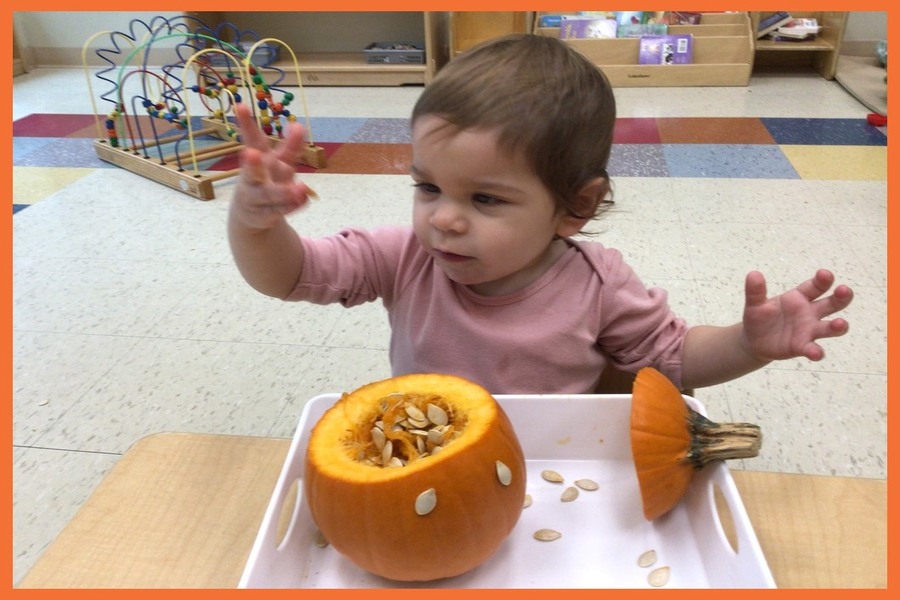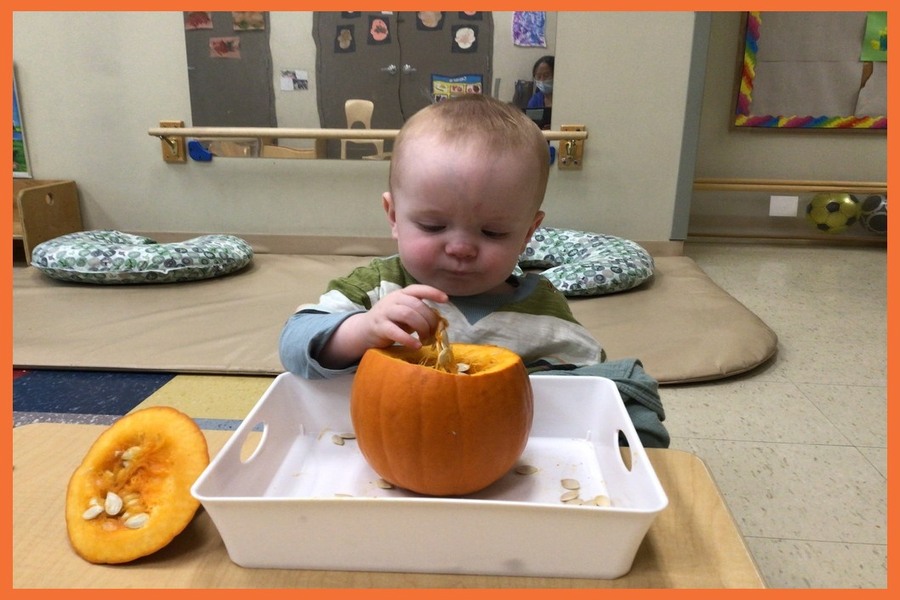
Description & Learning Objectives
In celebration of Halloween, the Infants had the opportunity to participate in a favourite holiday past time: pumpkin carving! Not only was this a fun activity, but it encouraged social interactions and engaged the children’s various senses as each child was able to scoop out the inside of a large pumpkin, smell its fresh aroma, and feel the sticky, squishy innards, slimy seeds, and hard shell.
Materials
- Pumpkin
- Various carving tools and containers
Observations & Findings
Pumpkin carving is a great activity to help children develop their senses. The more they explore, the more they begin to make connections and grasp a better understanding of the things around them. While doing this activity, we allow children the time to investigate and manipulate the different parts of the pumpkin. Before cutting it open, allow them to roll it around; maybe even try to lift it. And once you cut it open, let them feel the insides before taking out the seeds and feel it once its hollow. This is also a great time to build on children’s language skills. Using descriptive language helps them label what they are feeling and experiencing. The more hands on experience they have with the pumpkin, they more they are able to build on their developing skills.
Their olfactory (sense of smell) skills develop as they smell the scent coming from the pumpkin and understand that the pumpkin doesn’t really smell like anything until you cut it open. By using their hands to explore the pumpkin, children are able to build on their tactile skills. Not only feeling the hard exterior of the pumpkin, but also the squishy slimy insides as well. Some children may even decide to put their hands in their mouths after touching the slimy insides, and this builds on their development of taste. By using their senses to explore new things, they are also able to develop their discrimination skills. They begin to show preference to what they enjoy and what they don’t based on the experiences they’ve had. Children are also able to adapt this to their everyday lives and build a foundation as they continue to develop and mature.


